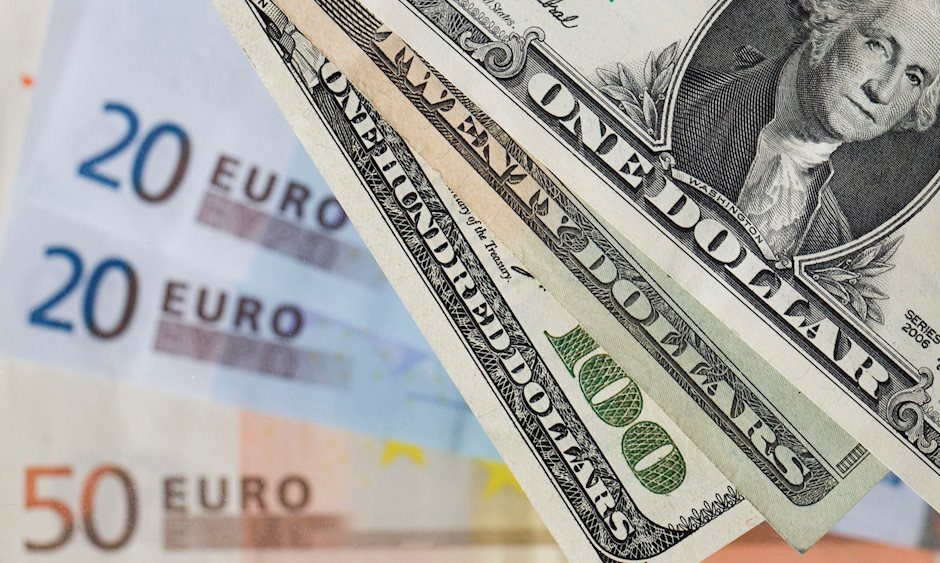EUR/USD rallies back over 1.08
- EUR/USD reclaimed the 1.0800 handle on Thursday.
- EU PMI figures came in mixed, giving Euro bulls just enough ammo.
- US Durable Goods Order and UoM Consumer Inflation Expectations in the barrel for Friday.

EUR/USD made a half-hearted recovery on Thursday, rebounding four-tenths of one percent and clawing back north of the 1.0800 handle. Despite a late-week bounce, Fiber remains steeply off of recent highs after declining over 4% top-to-bottom from late September’s peak bids near 1.1200.
Pan-European HCOB Purchasing Managers Index (PMI) figures mixed early Thursday, with the EU Manufacturing PMI from October rising to a firmer 45.9 from the previous month’s 45.0, eclipsing the expected 45.1. On the low side, October’s EU Services PMI sank to 51.2, lagging below the previous month’s 51.4 and missing the forecast uptick to 51.6.
The Euro’s representation on this week’s economic data docket is functionally wrapped up, with only low-tier data on the offer for Friday. Markets will have to contend with US Durable Goods Orders and an update to 5-year Consumer Inflation Expectations from the University of Michigan (UoM). Headline US Durable Goods Orders in September are expected to contract a full 1.0% MoM, extending the recent downturn after August’s flat-footed 0.0% print. October’s UoM 5-year Consumer Expectations are expected to come in close to their previous print of 3.0%.
EUR/USD price forecast
The EUR/USD pair continues its corrective movement, having found support just above the 1.0750 level following a sharp decline from the highs near 1.1250 in mid-September. The pair has briefly rebounded from this key support, but remains below both the 50-day EMA (blue line) at 1.0968 and the 200-day EMA (black line) at 1.0896, indicating that the overall trend is still tilted to the downside. The moving averages are sloping downward, confirming bearish momentum in the near term. The recent bounce appears corrective, and unless the pair breaks above the 1.0900 area, sellers may look to reenter the market.
The MACD indicator shows a continued bearish bias, with the MACD line (blue) remaining below the signal line (orange), and the histogram firmly in negative territory. However, there are early signs of potential exhaustion in the selling pressure, as the histogram shows less pronounced red bars. This suggests that while the bears are still in control, the momentum is waning. A break above the 200-day EMA could signal a bullish recovery, but failure to clear that resistance would likely lead to further downside, with immediate support around the 1.0750 level and a potential test of the 1.0650 zone in case of extended selling pressure.
EUR/USD daily chart

Euro FAQs
The Euro is the currency for the 19 European Union countries that belong to the Eurozone. It is the second most heavily traded currency in the world behind the US Dollar. In 2022, it accounted for 31% of all foreign exchange transactions, with an average daily turnover of over $2.2 trillion a day. EUR/USD is the most heavily traded currency pair in the world, accounting for an estimated 30% off all transactions, followed by EUR/JPY (4%), EUR/GBP (3%) and EUR/AUD (2%).
The European Central Bank (ECB) in Frankfurt, Germany, is the reserve bank for the Eurozone. The ECB sets interest rates and manages monetary policy. The ECB’s primary mandate is to maintain price stability, which means either controlling inflation or stimulating growth. Its primary tool is the raising or lowering of interest rates. Relatively high interest rates – or the expectation of higher rates – will usually benefit the Euro and vice versa. The ECB Governing Council makes monetary policy decisions at meetings held eight times a year. Decisions are made by heads of the Eurozone national banks and six permanent members, including the President of the ECB, Christine Lagarde.
Eurozone inflation data, measured by the Harmonized Index of Consumer Prices (HICP), is an important econometric for the Euro. If inflation rises more than expected, especially if above the ECB’s 2% target, it obliges the ECB to raise interest rates to bring it back under control. Relatively high interest rates compared to its counterparts will usually benefit the Euro, as it makes the region more attractive as a place for global investors to park their money.
Data releases gauge the health of the economy and can impact on the Euro. Indicators such as GDP, Manufacturing and Services PMIs, employment, and consumer sentiment surveys can all influence the direction of the single currency. A strong economy is good for the Euro. Not only does it attract more foreign investment but it may encourage the ECB to put up interest rates, which will directly strengthen the Euro. Otherwise, if economic data is weak, the Euro is likely to fall. Economic data for the four largest economies in the euro area (Germany, France, Italy and Spain) are especially significant, as they account for 75% of the Eurozone’s economy.
Another significant data release for the Euro is the Trade Balance. This indicator measures the difference between what a country earns from its exports and what it spends on imports over a given period. If a country produces highly sought after exports then its currency will gain in value purely from the extra demand created from foreign buyers seeking to purchase these goods. Therefore, a positive net Trade Balance strengthens a currency and vice versa for a negative balance.
Author

Joshua Gibson
FXStreet
Joshua joins the FXStreet team as an Economics and Finance double major from Vancouver Island University with twelve years' experience as an independent trader focusing on technical analysis.

















